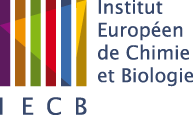| Solid-State NMR of Molecular Assemblies |
|
Research officer (CR1), CNRS Cette adresse email est protégée contre les robots des spammeurs, vous devez activer Javascript pour la voir. Tel: +33(0)540002212 BioAntoine Loquet graduated from the University of Lyon / Ecole Normale Supérieure de Lyon. He did his PhD (2006-2009) under the guidance of Anja Böckmann (IBCP Lyon), working on the development of Solid-State NMR to solve protein structures. In 2008 he joined the group of Beat Meier (ETH Zürich) to study prion fibrils by Solid-State NMR. He then focused his research on molecular assemblies by Solid-State NMR as an EMBO postdoctoral fellow with Adam Lange at the Max Planck Institute for Biophysical Chemistry (Göttingen, Germany). There, he developed Solid-State NMR methods to determine atomic structures of large biological supramolecular assemblies. He obtained a CNRS position in 2013 at the CBMN (Institute of Chemistry & Biology of Membranes & Nanoobjects) in Bordeaux. In 2014, he was recruited as a group leader at the IECB and since 2016, he is leading the group "NMR of Membranes and Protein Assemblies" at CBMN. His current research concentrates on the structural investigation of molecular assemblies using Solid-State NMR.
Keywords / Expertise / TechniquesStructural biology, biophysics, amyloid fibrils, nanoparticles, chemistry of wine, tannin – protein interaction, lipids, membrane SummarySelf-assembly is a fundamental process by which individual subunits assemble into ordered macromolecular entities, such as filaments, fibrils, oligomers, tubes, pores or nanomachines. In biology, protein assemblies are involved in crucial cellular processes, ranging from the propagation of neurological disorders to the initiation and execution of viral and bacterial infections. The group aims at investigating atomic structures, assembly processes and molecular interactions of such sophisticated assemblies. We develop and apply modern Solid-State Nuclear Magnetic Resonance (SSNMR) techniques to capture structural and dynamic details at the atomic scale. Molecular assemblies either involved in cellular processes or engineered by supramolecular chemistry constitute the current research activities. Furthermore, we study tannin-lipid interactions in the field of oenology and health. In oenology, tannins are responsible for the astringency and the bitterness of red wines. The former implicates an interaction between tannins and saliva proteins during mouth lubrication, while the latter results from an interaction between tannins and taste receptors. Julie Géan (Mdc, Université Bordeaux, IUT Périgueux) investigates tannin-lipid interactions and the anti-oxidant efficiency of tannins in membranes by liquid and solid-state NMR.
Research team
|
2, Rue Robert Escarpit - 33607 PESSAC - France
Tel. : +33 (5) 40 00 30 38 - Fax. : +33 (5) 40 00 30 68

 Recherche et formation
Recherche et formation


